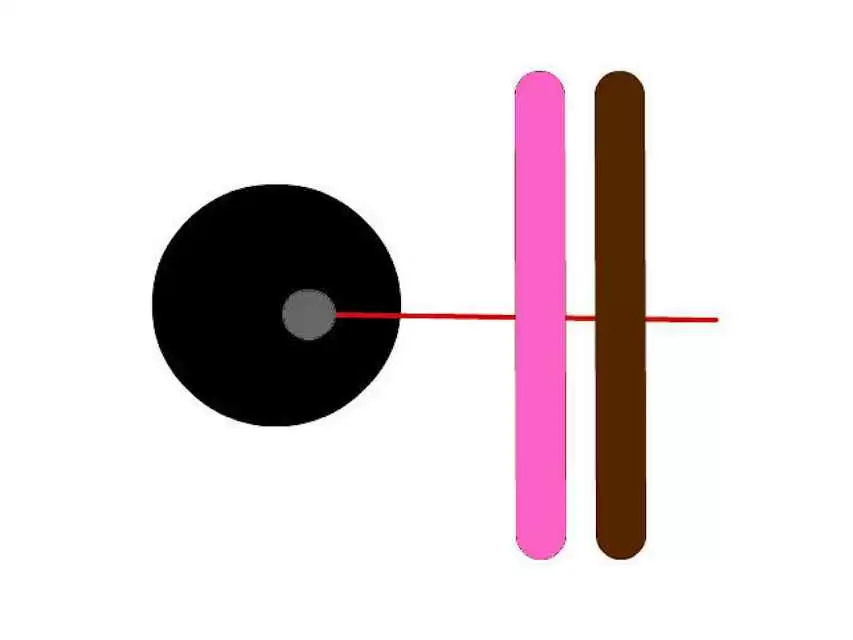
Celiac.com 08/07/2017 - The guidelines of the European Society of Pediatric Gastroenterology, Hepatology, and Nutrition allow for diagnosis of celiac disease without biopsies in children with symptoms and levels of immunoglobulin A against tissue-transglutaminase (TGA-IgA) 10-fold or more the upper limit of normal (ULN), confirmed by detection of endomysium antibodies (EMA) and positivity for HLA-DQ2/DQ8.
To validate this approach, a team of researchers recently performed a large, international prospective study. The primary goal was to see if the non-biopsy approach can identify children with celiac disease with a positive predictive value (PPV) above 99% in clinical practice. That means they want to make sure doctors can get it right at least 99 times out of 100 in the office. They also wanted to compare the performance of different serological tests and to see if the suggested criteria can be simplified.
Celiac.com Sponsor (A12):
The research team included KJ Werkstetter, IR Korponay-Szabó, A Popp, V Villanacci, M Salemme, G Heilig, ST Lillevang, ML Mearin, C Ribes-Koninckx, A Thomas, R Troncone, B Filipiak, M Mäki, J Gyimesi, M Najafi, J Dolinšek, S Dydensborg Sander, R Auricchio, A Papadopoulou, A Vécsei, P Szitanyi, E Donat, R Nenna, P Alliet, F Penagini, H Garnier-Lengliné, G Castillejo, K Kurppa, R Shamir, AC Hauer, F Smets, S Corujeira, M van Winckel, S Buderus, S Chong, S Husby, S Koletzko; ProCeDE study group, P Socha, Bozena Cukrowska, H Szajewska, J Wyhowski, N Brown, G Batra, Z Misak, S Seiwerth, Y Dmitrieva, D Abramov, Y Vandenplas, A Goossens, MW Schaart, VTHBM Smit, N Kalach, P Gosset, JB Kovács, A Nagy, I Lellei, R KÅ‘bányai, K Khatami, M Monajemzadeh, K Dimakou, A Patereli, T Plato Hansen, R Kavalar, M Bolonio, H Kogler, G Amann, R Kosova, M Maglio, E Janssens, R Achten, P Frűhauf, H Skálová, T Kirchner, L Petrarca, FM Magliocca, F Martínez, V Morente, S Thanner-Lechner, M Ratschek, M Gasparetto, L Hook, D Canioni, C Wanty, A Mourin, K Laurila, M Vornane, V Nachmias Friedler, SL Morgenstern, J Amil Dias, F Carneiro, S Van Biervliet, S Vande Velde, H Banoub, S Sampson, AM Müller, A Ene, M Rafeey, and IAT Eftekhar Sadat. See the team’s individual affiliations below.**
For their study, the team gathered data from consecutive pediatric patients 18 years or younger from 33 pediatric gastroenterology units in 21 countries. Patients all tested positive for TGA-IgA from November 2011 through May 2014, and all patients were on a gluten-containing diet. Local centers recorded patient symptoms, including measurements of total IgA, TGA, and EMA, and biopsy findings. The team recorded malabsorption when the children had chronic diarrhea, weight loss or insufficient gain, growth failure, or anemia.
They directly compared central findings from 16 antibody tests (8 for TGA-IgA, 1 for TGA-IgG, 6 for IgG against deamidated gliadin peptides, and 1 for EMA, from 5 different manufacturers) 2 HLA-DQ2/DQ8 tests from 2 manufacturers, and histopathology findings from the reference pathologist. They based final diagnoses on local and central results. When all local and central results agreed for celiac disease, the team recorded those cases as proven celiac disease. Patients with TGA-IgA levels that were 3-fold or less below the ULN, but otherwise showed no indications of celiac disease, were classified as no celiac disease.
The team conducted central histo-morphometry analysis on all other biopsies, and the cases were given a blind review. Inconclusive cases were regarded as not having celiac disease for better diagnostic accuracy and recruited 803 children for the study. They excluded 96 due to incomplete data, low level of IgA, or poor-quality biopsies, leaving 707 children, of whom 645 were diagnosed with celiac disease, 46 were found not to have celiac disease, and 16 had inconclusive results. The group was 65.1% female, and patients averaged 6.2 years old.
Results from local laboratories of TGA-IgA 10-fold or more above ULN, a positive EMA result, and any one symptom identified children with celiac disease (n=399) with a PPV of 99.75 (95% CI, 98.61-99.99). The PPV was 100.00 (95% CI, 98.68-100.00) in 278 patients when only malabsorption symptoms were used instead of any one symptom.
Inclusion of HLA analyses did not increase accuracy.
Findings from central laboratories differed greatly for patients with lower levels of antibodies, but when levels of TGA-IgA were 10-fold or more the ULN, PPVs ranged from 99.63 (95% CI, 98.67-99.96) to 100.00 (95% CI, 99.23-100.00).
This study confirms that children can be accurately diagnosed with celiac disease without biopsy. Diagnosis based on level of TGA-IgA 10-fold or more the ULN, a positive result from the EMA tests in a second blood sample, and the presence of at least 1 symptom could avoid risks and costs of endoscopy for more than half the children with celiac disease worldwide.
HLA analysis is not required for accurate diagnosis.
Source:
**The members of the research team are variously affiliated with the Dr. von Hauner Children’s Hospital, Ludwig-Maximilian’s University Munich, Celiac Disease Center Heim Pál Children’s Hospital, Budapest and Dept. of Pediatrics, University of Debrecen, Hungary, University of Medicine and Pharmacy “Carol Davila” and National Institute for Mother and Child Health “Alessandrescu-Rusescu”, Bucharest, Romania, Institute of Pathology, Spedali Civili, Bresci, Italy, Dept. of Clinical Immunology, Odense University Hospital, Denmark, Dept. of Pediatrics, Leiden University Medical Center, the Netherlands, Dept. of Pediatric Gastroenterology and Hepatology, La Fe University Hospital, Valencia, Spain, Dept. of Pediatric Gastroenterology, Royal Manchester Children's Hospital, Manchester, United Kingdom, Dept. of Translational Medical Sciences & European Laboratory for the Investigation of Food-Induced Diseases, University Federico II, Naples, Italy, Center for Child Health Research, University of Tampere and Tampere University Hospital, Tampere, Finland, Dept. of Pediatric Gastroenterology & Hepatology, Children Medical Center, Tehran University of Medical Sciences, Iran, Dept. of Pediatrics, University Medical center (UMC) Maribor, Slovenia, Hans Christian Andersen Children's Hospital, Odense University Hospital, Denmark, Division of Gastroenterology, Hepatology and Nutrition, First Dept. of Pediatrics, Children's Hospitals "Agia Sophia", University of Athens, Athens, Greece, Gastroenterology Outpatient Clinic, St. Anna Children's Hospital, Medical University Vienna, Vienna, Austria, Dept. of Pediatrics, First Faculty of Medicine and General Teaching Hospital, Charles University, Prague, Czech Republic, Dept. of Pediatrics, Sapienza University of Rome, Italy, Dept. of Pediatrics, Jessa Hospital, Hasselt, Belgium, Dept. of Pediatric Gastroenterology, Addenbrookes Hospital, Cambridge, United Kingdom, Dept. of Pediatric Gastroenterology, Hepatology and Nutrition, Hôpital Necker-Enfants Malades, Paris, France, Dept. of Pediatric Gastroenterology and Nutrition, Hospital Universitari Sant Joan, Reus, Spain, Institute of Gastroenterology, Nutrition and Liver Diseases, Schneider Children's Medical Center of Israel, Sackler faculty of Medicine, Tel Aviv University, Tel Aviv, Israel, Dept of Pediatrics, Medical University of Graz, Graz, Austria, Université Catholique de Louvain, IREC, PEDI, Cliniques universitaires Saint Luc, Brussels, Belgium, Dept. of Pediatric Gastroenterology, Hospital S. João, Porto, Portugal, Dept. of Pediatric Gastroenterology, Hepatology and Nutrition, Ghent University Hospital, Ghent, Belgium, Dept. of Pediatrics, St. Marien Hospital, Bonn, Germany, Queen Mary's Hospital for Children, Carshalton, United Kingdom, Department of Gastroenterology, Hepatology, Nutritional Disorders and Pediatrics, Pathology Department, Children's Memorial Health Institute, Warsaw, Poland, Pediatrics, Medical University of Warsaw, Pathomorphology, Pediatric University Hospital, Warsaw, Poland, Royal Manchester Children’s Hospital, Manchester, UK, Referral Center for Pediatric Gastroenterology and Nutrition, Children’s Hospital Zagreb, Institute of Pathology, Medical School University of Zagreb, Zagreb, Croatia, Russian Medical Academy of Continuing Postgraduate Education, Pathology, Kidz Health Castle, UZ Brusses, Brussel, Belgium, Pediatrics, Pathology, Leiden University Medical Center (LUMC), Hôpital Saint Vincent de Paul, Catholic University, Gastroenterology & Nephrology, Pathology, Heim Pál Children's Hospital, Budapest, Pediatric Gastroenterology, Hepatology &Nutrition, Children Medical Center, Tehran University of Medical Science and Mofid Children Hospital, Shahid Beheshti University of Medical Sciences, Pathology Unit, Children Medical Center Hospital Tehran, Division of Gastroenterology and Hepatology, First Department of Pediatrics, Children’s hospital «Agia Sofia», University of Athens, Clinical Pathology, Odense University Hospital, Department of Pathology, University Medical Center Maribor, Maribor, Slovenia, Pediatric Gastroenterology & Hepatlogy and David Ramos, Pathology Unit, La Fe University Hospital Valencia, St. Anna Children's Hospital, Department of Pathology, Medical University Vienna, Dept. of Translational Medical Sciences & European Laboratory for the Investigation of Food-Induced Diseases, University Federico II, Naples Italy, Pediatrics, Pathology, Jessa Hospital, Hasselt, Pediatrics and Adolescent Medicine, pathologist, Institute of Pathology, First Faculty of Medicine and General University Hospital, Charles University, Prague, Czech Republic, Institute of Pathology, Ludwig Maximilian's University Munich, Munich, Germany, Pediatrics and Infantile Neuropsychiatry, Radiology, Oncology and Human Pathology, “Sapienza” University, Rome, Italy, Gastroenterology Unit, Pathology Unit, Hospital Universitari de Sant Joan de Reus, IISPV, URV, Pediatrics, Institute for Pathology, Medical University of Graz, Austria, Pediatric Gastroenterology, Hepatology & Nutrition, Pathology, Cambridge University NHS Foundation Trust, Addenbrookes Hospital, Cambridge, UK, Anatomo-Pathology, Hôpital Necker-Enfants Malades, Paris, France, Pediatric Gastroenterology, Pathology Unit, Université Catholique de Louvain, Cliniques universitaires Saint Luc, Brussels, Belgium, Centre for Child Health Research, University of Tampere and Tampere University Hospital, Tampere, Finland, Institute of Gastroenterology, Nutrition & Liver Diseases, Schneider Children's Medical Center, Department of Pathology, Rabin Medical Center, Sackler Faculty of Medicine, Tel Aviv University, Israel, Hospital S. João, Porto, Portugal, Dept. of Pediatric Gastroenterology, Hepatology and Nutrition, Ghent University Hospital, Gent, Belgium, Queen Mary's Hospital for Children, Dept of Pathology, Epsom & St Helier University NHS Trust, Carshalton, UK, Department of Pathology, University of Bonn, Bonn, Germany, Histology Department National Institute for Mother and Child Health, Bucharest, Romania, and with the Liver & Gastrointestinal Research Center, Pathology Unit, Tabriz University of Medical Sciences.









Recommended Comments
There are no comments to display.
Create an account or sign in to comment
You need to be a member in order to leave a comment
Create an account
Sign up for a new account in our community. It's easy!
Register a new accountSign in
Already have an account? Sign in here.
Sign In Now